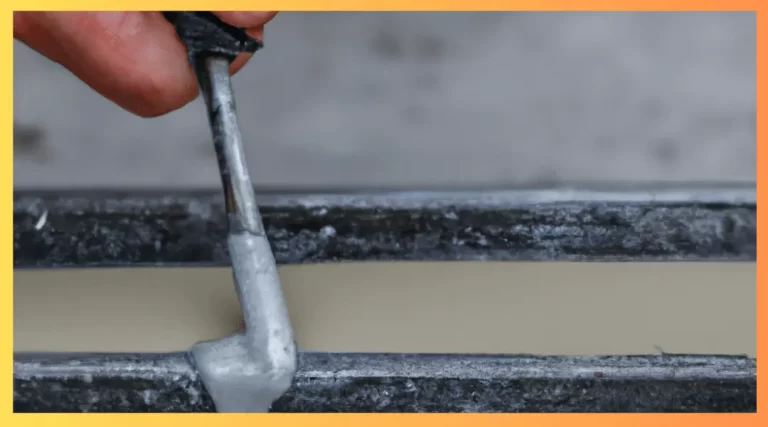In the world of law enforcement, investigators are always on the lookout for new methods and technologies to help them solve crimes, recognizing that every piece of evidence counts. One such tool that has found its place in the arsenal of investigative techniques is the use of Super Glue.
One such technology that has become increasingly popular is super glue, also known as cyanoacrylate. Super glue has proven to be a powerful tool in helping to identify and collect evidence, and has been used in a wide range of criminal investigations.
In this article, we will explore what super glue is, how it is used in law enforcement, its applications, techniques for using it, and the challenges and controversies surrounding its usage.
Let’s dive into this peculiar topic and uncover the taste, health risks, and even unique uses of glue beyond its intended purpose.
What is Super Glue?
Super glue is a fast-acting, high-strength adhesive that is commonly used in a variety of settings, including household repairs, carpentry, and even in the medical field. It is a type of cyanoacrylate, which is a family of strong and fast-acting adhesives. Super glue bonds quickly and strongly to a variety of surfaces, including metal, plastic, and even skin.
How Does Super Glue Work in Law Enforcement?

In law enforcement, super glue is used to collect evidence from crime scenes. When super glue comes into contact with moisture, such as the oils and sweat left behind by a person’s fingers, it produces a white residue that can be used to reveal fingerprints. This process, known as cyanoacrylate fuming, involves heating up the super glue in a special chamber and then introducing it to the crime scene. The fumes from the glue bond with the moisture and leave behind a visible residue that can be photographed or lifted with tape.
Applications of Super Glue in Law Enforcement
Super glue is used in law primarily for fingerprint collection. By revealing latent fingerprints that might not otherwise be visible, super glue can help identify suspects and link them to the crime scene. In addition to fingerprint collection, super glue can also be used to collect DNA evidence and trace evidence such as fibers, hairs, and other particles.
Super Glue as an Alternative to Traditional Evidence Collection Techniques
Super glue is often used as an alternative to traditional evidence collection techniques such as dusting for fingerprints. While dusting can be effective, it can also be messy and time-consuming. Super glue fuming, on the other hand, is a relatively quick and simple process that can reveal fingerprints even on difficult surfaces such as plastic bags or metal surfaces. Super glue fuming is also less likely to disturb other evidence at the crime scene.
Techniques for Using Super Glue in Law Enforcement
There are several techniques for using super glue in federal enforcement, including cyanoacrylate fuming, the Small Particle Reagent (SPR) method, and vacuum metal deposition (VMD) method. Cyanoacrylate fuming is the most common method and involves heating the super glue in a special chamber and then introducing it to the crime scene. The SPR method involves using a solution of super glue and a fluorescent dye to reveal fingerprints. The VMD method involves depositing a thin layer of metal on top of the super glue residue, which can then be examined using a scanning electron microscope.
Factors that Affect the Success of Super Glue Usage in Law Enforcement
Several factors can affect the success of super-glue usage in law enforcement. Temperature and humidity, for example, can affect the quality of the fumes produced by the super glue. The type and age of the glue can also affect the quality of the residue left behind. Additionally, the surface material can affect the success of super glue fuming, with porous surfaces such as paper or cardboard being more difficult to work with.
Safety Precautions for Law Enforcement Officers When Using Super Glue
Like any chemical substance, super glue can pose health risks if not handled properly. Federal enforcement officers must take appropriate safety precautions when using super glue, such as wearing personal protective equipment (PPE) and ensuring proper ventilation. Long-term exposure to super glue fumes can cause respiratory problems and skin irritation, so officers should always handle the substance with care.
Challenges Faced by Law Enforcement when Using Super Glue
While super glue has proven to be a valuable tool for law enforcement, it is not without its limitations and challenges. One of the main challenges is the cost of the super glue and the equipment needed to use it. Additionally, obtaining a search warrant to use super glue can be difficult, as the process involves entering private property and using potentially harmful chemicals.
Famous Cases Solved Using Super Glue
Super glue has been used to solve several high-profile criminal cases, including the 1986 murder of two teenage girls in Lake Tahoe. In that case, investigators used super glue fuming to reveal a latent fingerprint on a note left behind by the killer, leading to the arrest and conviction of the perpetrator. Super glue has also been used to solve numerous other cases, including burglaries, robberies, and homicides.
Legal Issues Surrounding Super Glue Usage in Law Enforcement
The use of super glue in federal department has sparked controversy in some cases, particularly when it comes to the legality of using super glue as evidence in court. Some defense attorneys have argued that the use of super glue fuming is invasive and violates an individual’s Fourth Amendment rights. However, courts have generally upheld the use of super glue fuming as a valid evidence collection method.
Future of Super Glue Usage in Law Enforcement
As technology continues to advance, so too will the use of super glue in law enforcement. Innovations in super glue technology are already underway, with researchers exploring new methods and materials for producing stronger, more effective adhesives. Additionally, the use of super glue in conjunction with other technologies such as DNA analysis and facial recognition software could help investigators solve crimes more quickly and accurately in the future.
Conclusion
Super glue has become an increasingly important tool in the world of crime fighters, helping investigators collect evidence and solve crimes. While the use of super glue is not without its challenges and controversies, it remains a powerful and valuable resource for federal enforcement officers. As technology continues to advance, the future of super glue in law enforcement looks bright, and it will likely play an even larger role in investigations in the years to come.





